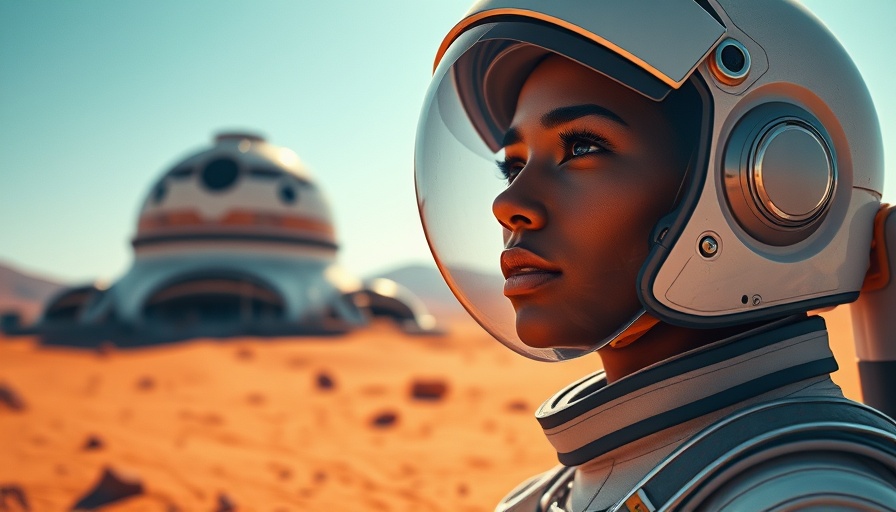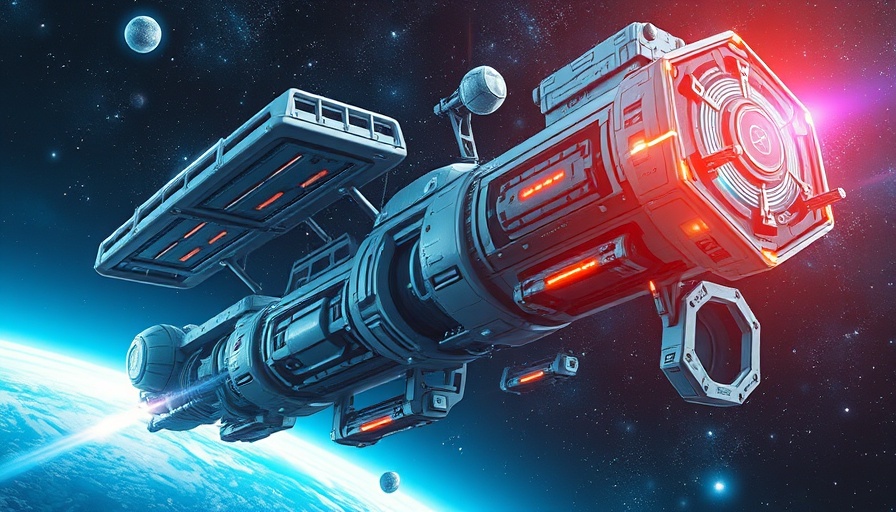
Exploring the Future of Mars and Moon Colonization: A Vision for Humanity
The concept of colonizing Mars and the Moon has shifted from science fiction to an imminent reality, framed against an engaging backdrop that includes advanced robotics, artificial intelligence (AI), and groundbreaking biotechnology. In a narrative that captures human ingenuity and resilience, this article sheds light on the transformative journey of space colonization, focusing on the groundbreaking technologies that will shape our future on these celestial bodies.
The video 'Mars & Moon Colonization: Full Documentary' presents a fascinating exploration of the technologies that will shape human habitation on Mars and the Moon, prompting an analysis of the role of AI and innovation in this new domain.
Historical Context: The Dawn of Space Exploration
The past few decades have witnessed remarkable strides in space exploration, ushering in a new era that redefines humanity’s relationship with the cosmos. Initiated by programs like NASA's Apollo missions, the foundation was laid for subsequent ventures, including SpaceX’s Dragon and Mars Colonization initiatives. Through this illustrious history, we have acquired invaluable knowledge about planetary environments and the challenges of adapting to extraterrestrial habitats.
AI and Robots as Key Players: Reshaping Our New Worlds
As we venture into colonization, AI plays a pivotal role, guiding nearly every aspect of life on Mars and the Moon. From developing habitats through automated robotics to optimizing agricultural strategies with intelligent farming practices, AI ensures both survival and comfort for settlers. Advanced algorithms will enable robots to construct safe living quarters while also allowing for a seamless integration into daily tasks such as food preparation, maintenance, and interplanetary travel logistics.
The Role of 3D Printing Technology: Constructing Habitats
3D printing technology will revolutionize construction on Mars and the Moon, allowing habitats to be fabricated quickly and efficiently using local materials. This technology significantly reduces the need for transport from Earth, making it feasible to build entire cities using resources readily available on these celestial bodies. As such, innovative techniques—like 3D bioprinters that create food and even medical supplies—are set to enhance the quality of life in space.
Biotechnology: Resilience Against Harsh Environments
Biotechnological innovations promise to augment human resilience in the face of Martian and lunar challenges. Scientists are exploring genetic modifications to enhance human adaptability to low gravity and radiation exposure. The establishment of agricultural systems utilizing genetically-engineered plants and lab-grown meats will pave the way for sustainable food sources, reducing dependency on Earth.
Smart Energy Solutions: Powering Our Future Settlements
Energy generation on Mars is crucial for sustaining human life. Solar panels coupled with nuclear fusion reactors will harness renewable resources, ensuring that colonies have sufficient power to support infrastructure and daily living needs. These energy technologies will also facilitate further advancements in AI and robotics and drive the industrial capabilities of Martian cities.
Space Mining and Resource Utilization: The New Gold Rush
As human presence expands beyond the confines of Earth, space mining will become a focal point of future economies. Identifying and extracting resources from Martian surfaces and asteroids will provide valuable materials essential for sustaining colonies and supporting new industries. Enterprises involved in this endeavor will redefine the concept of wealth, creating an interplanetary economy that transcends traditional boundaries.
Addressing Ethical Concerns: Balancing Industry and Nature
With great capability comes significant responsibility. The ethical implications of colonizing and terraforming celestial bodies raise important questions about ecological preservation, especially regarding potential off-world contamination. Addressing these concerns is vital for the sustainable development of Mars and the Moon, as emerging regulations and standards will help guide human actions in these fragile environments.
Communicating Across the Cosmos: The Role of Advanced Networks
As colonization progresses, establishing effective communication channels will be paramount. Advanced interplanetary networks equipped with satellites will facilitate seamless data exchange between Earth, the Moon, and Mars. The ability to communicate in real-time will enhance mission control effectiveness and provide comfort to settlers through consistent contact with loved ones.
In conclusion, the future of Mars and Moon colonization is brimming with potential fueled by technological innovation, human resilience, and a collaborative spirit. As we boldly venture into this new frontier, the prospect of establishing thriving human communities in space transforms from mere dream to achievable reality, presenting new opportunities for not only survival but also prosperity on a cosmic scale.
 Add Row
Add Row  Add
Add 




Write A Comment